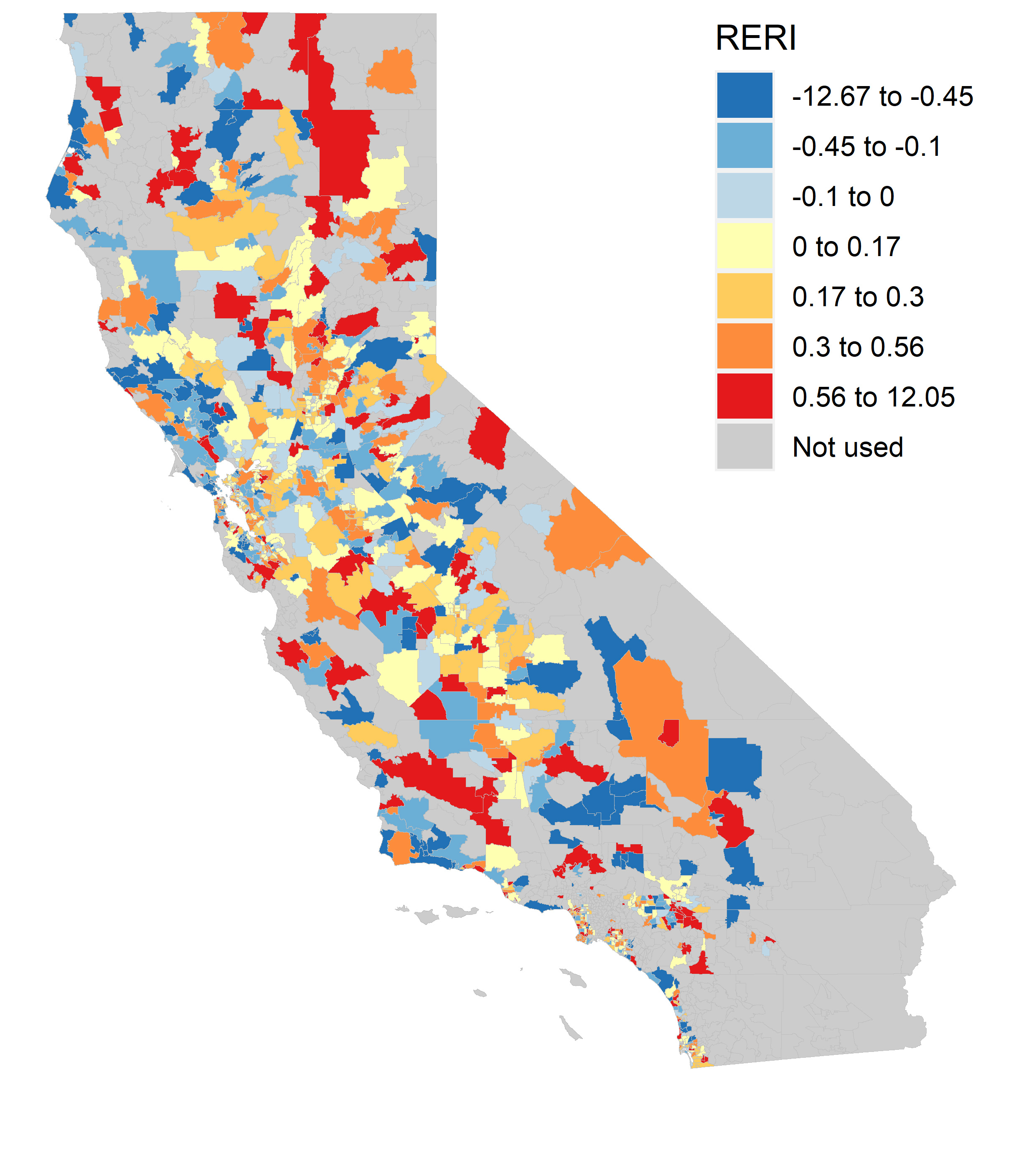Extreme Heat, Wildfires Combine to Disproportionately Harm Less Affluent and Communities of Color
California ZIP code-scale survey exposes need for rethinking of public policy, say researchers
Published Date
Story by:
Media contact:
Share This:
Article Content
Extreme heat and wildfire smoke, potentially lethal on their own, can act in concert to produce increased damage to people’s hearts and respiratory systems, according to researchers.
A new study led by Scripps Institution of Oceanography at UC San Diego in collaboration with the UCLA Fielding School of Public Health analyzed California health records during episodes of dangerous heat and exposure to wildfire smoke from 2006 to 2019, broken down by ZIP code. It detected increased hospitalizations, especially when both conditions occurred on the same day. Importantly, said the researchers, the excess harm from the co-occurring hazards to people was found to be greater in ZIP codes where residents were likely to be poorer, people of color, living in higher density, and less likely to have health insurance.
Tarik Benmarhnia, a climate change epidemiologist at Scripps Institution of Oceanography, said the study makes apparent the need for policymakers to consider jointly such climate hazards and their environmental justice implications at all levels of government, not only in terms of public health protection but also in the design of urban and suburban living spaces.
Chen Chen, a postdoctoral scholar at Scripps Institution of Oceanography and the study’s lead author, said the study emphasizes the need to consider the combined effects of co-occurring hazards in climate change health research, since many climate hazards occur more frequently because of climate change and share similar physiological impacts.
The study appears Feb. 2 in the journal Science Advances. Support for it came from the UC Center for Climate Health Equity and by the National Institute on Aging.
Exposure to extreme heat alone causes the deaths of an estimated 360,000 people a year globally. Exposure to the fine particulate matter in smoke kills as many as 680,000 people worldwide every year. Both conditions are more common now as the planet continues to experience record heat and changes in precipitation regimes in the context of climate change.
But considering both together instead of separately could improve how health care decisions are made and how agencies issue and design warnings to the public, said the authors. For instance, they note that the National Weather Service issues excessive heat warnings. Local air quality districts alert the public to dangerous air pollution events. Multiple entities could instead issue joint warnings during wildfires burning on hot days to amplify the reach of their messaging and mitigate such compounded health effects, especially among communities identified as vulnerable.
“If a synergistic effect existed between wildfire smoke and extreme heat, issuing a joint warning earlier considering the compound exposure would be beneficial,” the authors wrote.
“Existing evaluation of climate-related health impacts generally estimates the influence of each climate hazard separately and ignores potential synergistic effects between climate hazards, which might underestimate the actual health burden and jeopardize the effectiveness of climate change adaptation plans,” they added.
The researchers got their results by analyzing how many days of heat were experienced by people in 995 California ZIP codes, how many days they were exposed to wildfire smoke, and how many days to both between 2006 and 2019. They found a disproportionate increase in the number of hospitalizations of people brought in for cardiopulmonary problems when both heat and wildfire smoke occur within a ZIP code.
“In other words, we found a higher health impact due to interactions of wildfire smoke and extreme heat than the sum of health impacts from the individual hazards separately,” wrote the authors.
The researchers also emphasized the need to consider neighborhood-to-neighborhood differences in climate-related health impacts as climate hazards aren’t evenly distributed across space might have different susceptibility and ability to protect themselves against such impacts. They found that synergistic effects between wildfire smoke and extreme heat were most pronounced in mountain, central valley, and large coastal metropolitan areas.
The authors then analyzed which sociodemographic characteristics could drive such locational differences and found that communities with lower incomes, more crowded, or with higher proportions of racial and ethnic minority residents were more likely to be affected by such compounded climate hazards. They also found that higher levels of tree canopy or access to air conditioning reduced such risks. Although uncertainty remains in the mechanisms behind such vulnerability, providing targeted support would help mitigate the joint effects of compound hazards, such as establishing clean air and cooling centers near the most affected areas.
Study authors include Lara Schwarz, a graduate student who is in a joint doctoral program at San Diego State University and the Herbert Wertheim School of Public Health and Human Longevity Science at UC San Diego, and Noam Rosenthal and Miriam Marlier at the Department of Environmental Health Sciences at UCLA.
Learn more about research and education at UC San Diego in: Climate Change

Share This:
You May Also Like
Stay in the Know
Keep up with all the latest from UC San Diego. Subscribe to the newsletter today.



